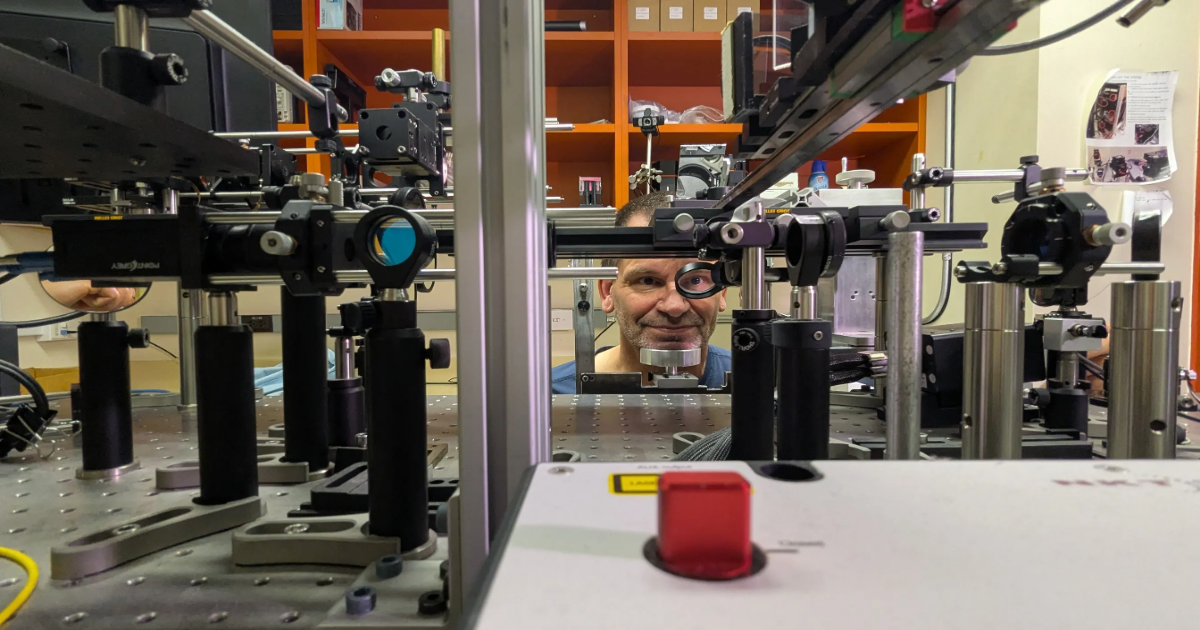
A team of researchers says there’s a new color in the atmosphere. But here’s the deal: You can see it only by being shot in the eye with a laser.
Scientists at the University of California, Berkeley, who have witnessed the new color they dubbed “olo” described it as a deep, rich blue-greenish hue that can’t be seen with the naked human eye.
“It’s a variation of a blue-green, teal or peacock green color, all of those could be considered as accurate descriptions,” Ren Ng, an electrical engineer and computer science professor at Berkeley, told USA TODAY. “But I think it’s deeper than that because of the saturation level. I’d describe it and say it’s the most intense teal you can see in the world. It’s that striking.”
The researchers published their study in the journal Science Advances on April 18. But how does it work? Here’s what you need to know.
Wavelengths in your eyes
There are three types of cone cells in the eye – S, L, and M – each one sensitive to different wavelengths of the colors blue, red and green.
The researchers’ study said that in normal vision, “any light that stimulates an M cone cell must also stimulate its neighboring L and/or S cones” because its function overlaps with them.
But in their study, a laser stimulated only M cones, “which in principle would send a color signal to the brain that never occurs in natural vision,” the researchers wrote. Seeing the color olo needed specific stimulation to push the vision beyond its normal limits.
Five human subjects were able to see the color, including Berkeley researcher Hannah Doyle and Austin Roorda, an optometry and vision science professor who was also on the research team.
Two participants were University of Washington scientists who weren’t aware of the experiment’s purpose.
The doses of laser lights individually controlled up to 1,000 photoreceptors in the human eye at once, according to the research. Participants also were asked to try to match olo using a controllable color, coming closest with a shade of teal.
Beyond a new color
Ng and fellow researchers said they spent four years experimenting – but they believe their research goes beyond presenting a novel new color.
The researchers told USA TODAY they hope the technology could create new ways to help those who suffer from color-blindness and allow scientists to better interpret how a person’s brain perceives color through the distinctions between the cone cells in your eyes.
Doyle, a fourth-year graduate student, told USA TODAY there’s also interest in using the technology for studying retinal diseases such as cone cell loss, which could lead to decreased color perception and increased sensitivity to light, and other diseases that could lead to blindness.
“This will definitely lead to lots of opportunities for follow-up research,” she said.
Kids’ eyesight is getting worse: Special contact lenses may be the answer.
“Overcoming optical limitations with adaptive optics has allowed us to make new discoveries in vision science, from mapping the trichromatic cone mosaic for the first time ever, to learning how human visual acuity responds to an aberration correction,” Roorda said, referencing the three kinds of cone cells in eyes and remedying certain kinds of problems in the human eye.
The research raised questions for some experts. John Barbur, a vision scientist at City St George’s, University of London, told the Guardian he doesn’t believe the discovery is necessarily a new color.
“It’s a more saturated green that can only be produced in a subject with normal red-green chromatic mechanism when the only input comes from M cones,” he told the outlet.
And don’t expect olo to appear as a paint or paper color or get its own crayon anytime soon, Ng said. Though there is a vision for others to see it on a virtual reality headset, the researchers will continue to “purify and perfect” more versions of olo.
“Olo is a starting point, not an ending point,” Ng said. “We want to make sure this cell-by-cell display is working correctly.”
What are cataracts?: Everything you need to know about cataracts (and what causes them)
